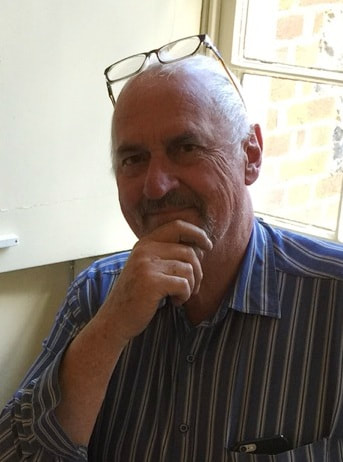Peter, an Aboriginal man from near Tumbarumba NSW, uses his art to explore the misconception of Aboriginals as ‘savages’. His series of mission blankets with copies of nineteenth century etchings starkly confronted this idea. The large study of ‘Progress’ showing an Aboriginal man being crushed in a mining whim, asks the question: Was the finding of gold in Ballarat progress for Aboriginal people? Likewise the video of Megan and him on the high plains, masked and wearing a possum skin cloak as they acted out their roles of settler and Aboriginal, with Megan obliterating the art works that Peter had drawn on the rock faces. Within these serious charges, Peter confronts the events with a certain wry humour and irony as he seeks to explore what these deprivations mean to contemporary Aborigines.
Megan, a descendant of squatters in the same area, uses her textile skills to embellish pieces of colonial furniture with beaded scenes including portraits of her grandparents and herself. Using red beads, Megan mutilates the furniture with slashes suggesting the blood spilt in these frontier confrontations. Chairs with carving forks stuck in them, a settee with rifles for legs and a chandelier dripping with red strands of beads cascading from it, further define this idea. Her excellent beaded work on these pieces gives an unsettling contrast of both beauty and horror.
Both artists wanted to debunk the idea of the ‘golden light of colonisation’ that has pushed Aboriginal history aside to acknowledge the tragedies of settlement. Both artists believe that if both cultures face these facts and listen to these forgotten stories there will be a better chance of settlers and Aborigines moving forward in shared understanding.
Meg Dillon


